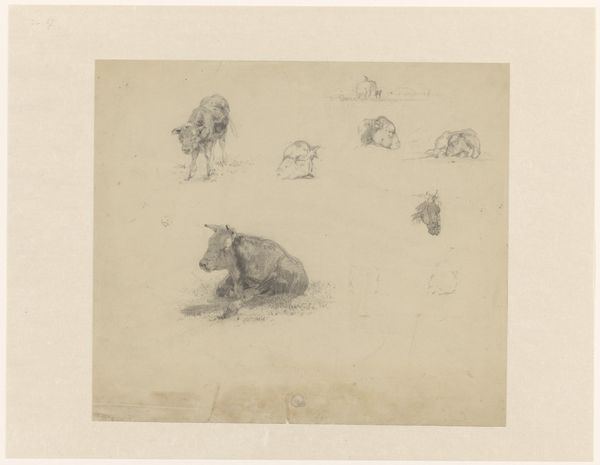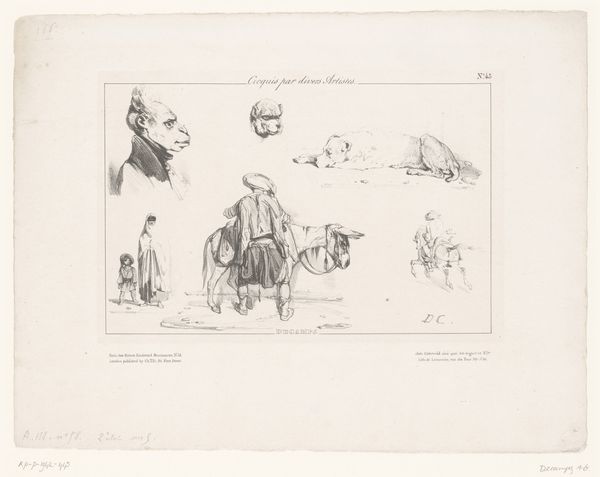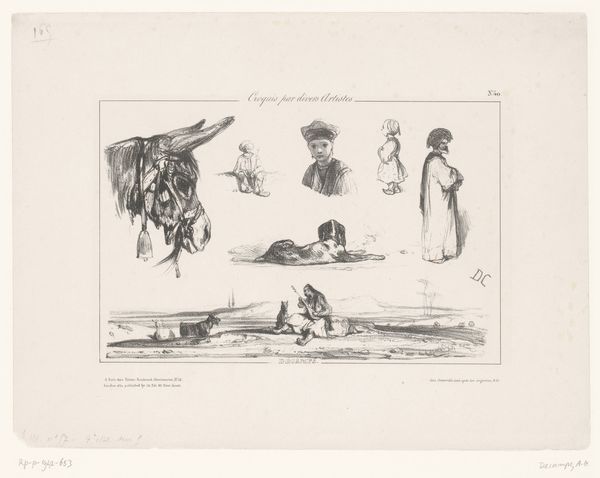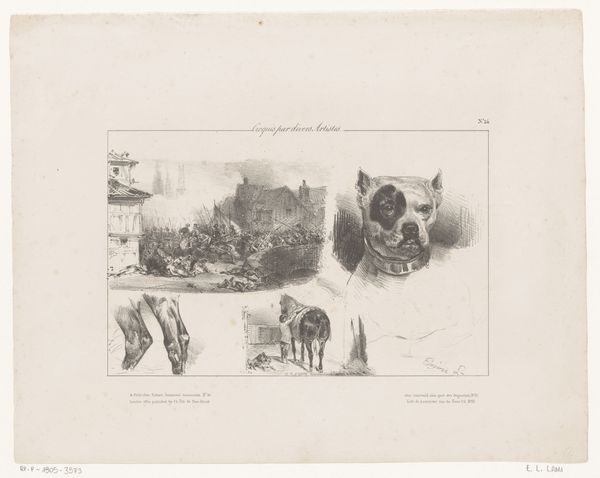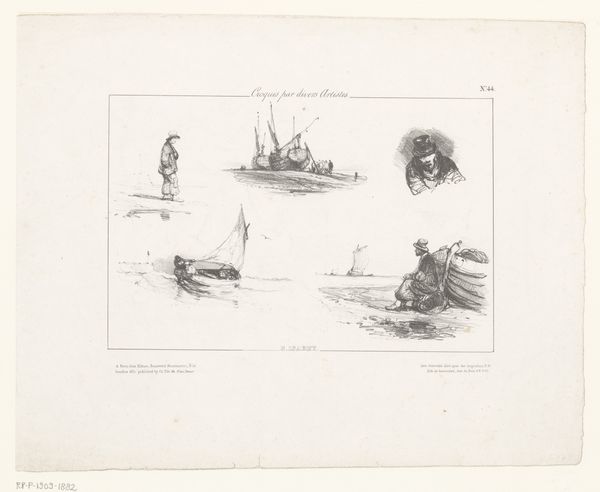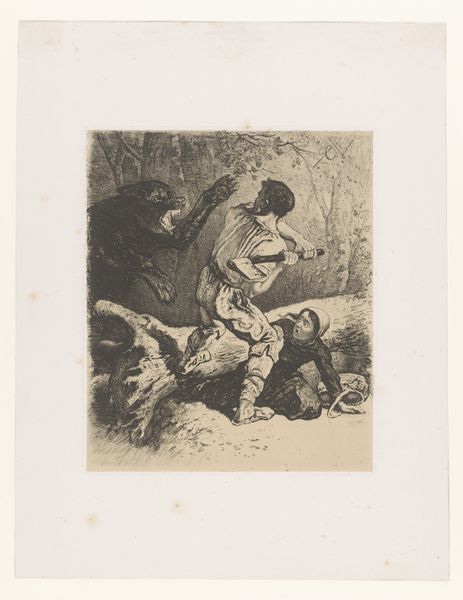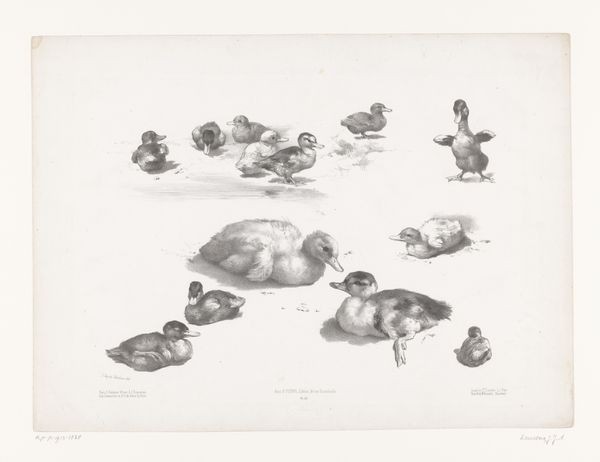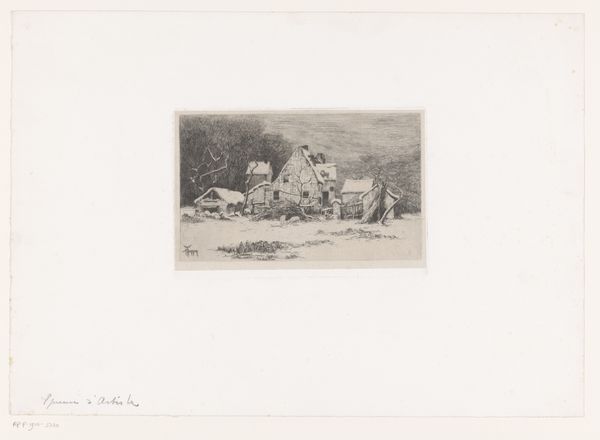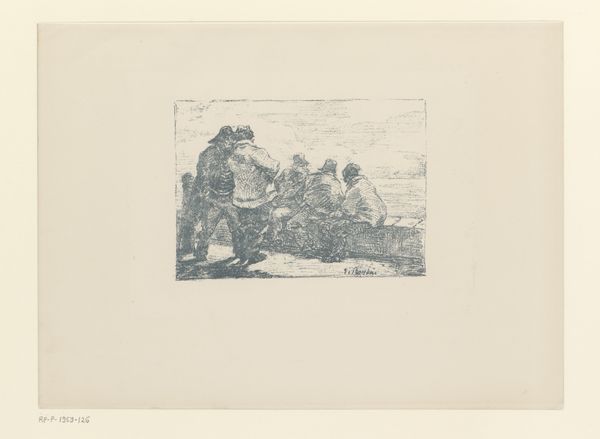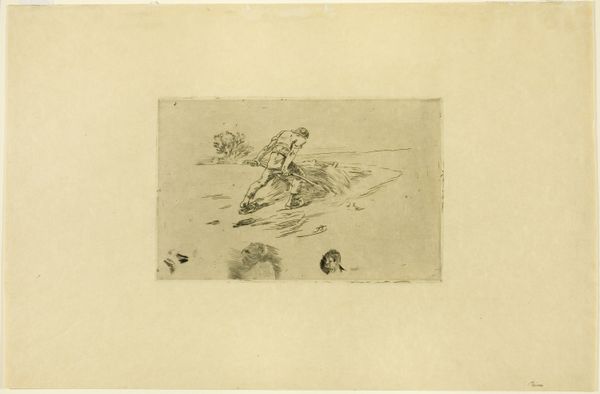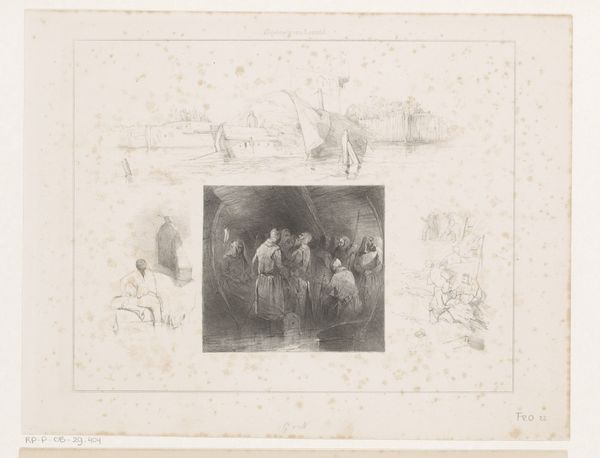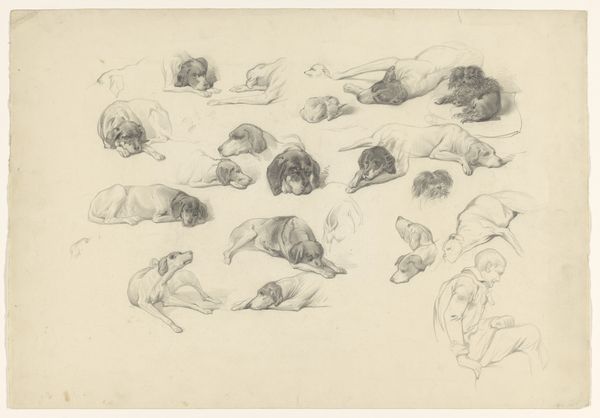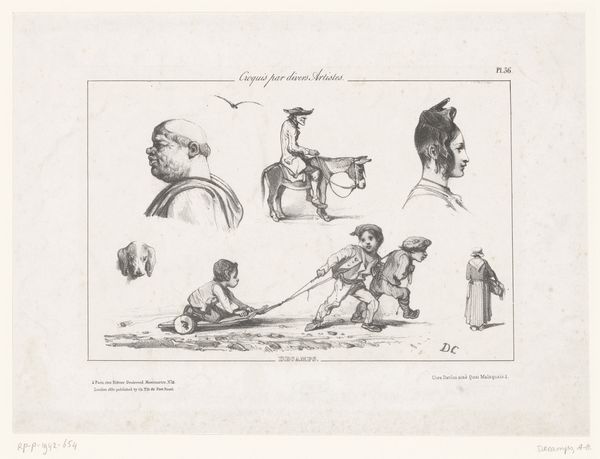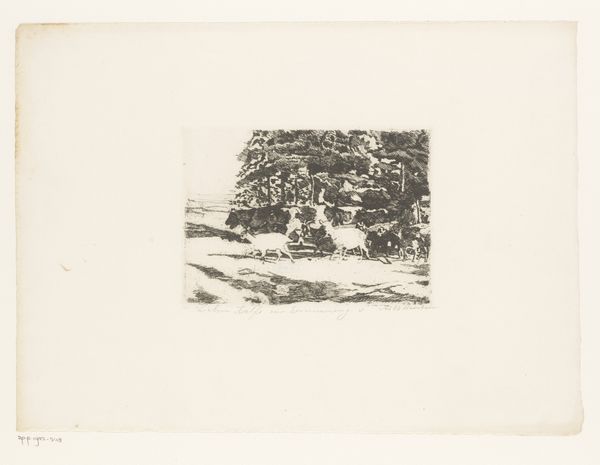
Soldaten en burgers tijdens de Servische aftocht in de Eerste Wereldoorlog 1917
0:00
0:00
drawing, paper, ink
#
portrait
#
drawing
#
paper
#
ink
#
history-painting
#
realism
Dimensions: height 337 mm, width 458 mm
Copyright: Rijks Museum: Open Domain
Editor: This ink drawing on paper, “Soldiers and Citizens during the Serbian Retreat in the First World War” by Théophile Alexandre Steinlen, created in 1917, has a haunting quality. The clustered figures and ghostly faces emerging around the edges create a scene of immense suffering. How do you interpret the emotional weight of this imagery? Curator: It's the weight of history etched in ink, isn't it? Look at how Steinlen uses line—sparingly, yet with such raw emotionality. These aren’t just people; they are symbols of a collective trauma, a visual representation of the cultural memory of wartime suffering. Notice the faces – what do they convey to you? Editor: A profound sense of despair and exhaustion. It feels very personal. Curator: Exactly. Steinlen’s focus on individual suffering elevates the human cost beyond mere statistics. These become archetypes of displacement and resilience. Do you think the detached sketches surrounding the central image reinforce this feeling of fragmentation? Editor: I hadn’t thought of it that way, but they definitely do! The floating heads and isolated figures contribute to the overall sense of a broken society, like scattered pieces of a shattered whole. Curator: Precisely. He encapsulates a visual history of suffering that resonates far beyond the immediate context of the First World War. Think about similar symbols throughout history and across cultures… it’s a powerful reminder of our shared humanity. Editor: Looking at the work through the lens of iconography gives it a new layer of meaning. Thanks, I’ll never look at it the same way again. Curator: And I'm reminded of how art can capture the unspoken narratives that shape cultural consciousness.
Comments
No comments
Be the first to comment and join the conversation on the ultimate creative platform.
